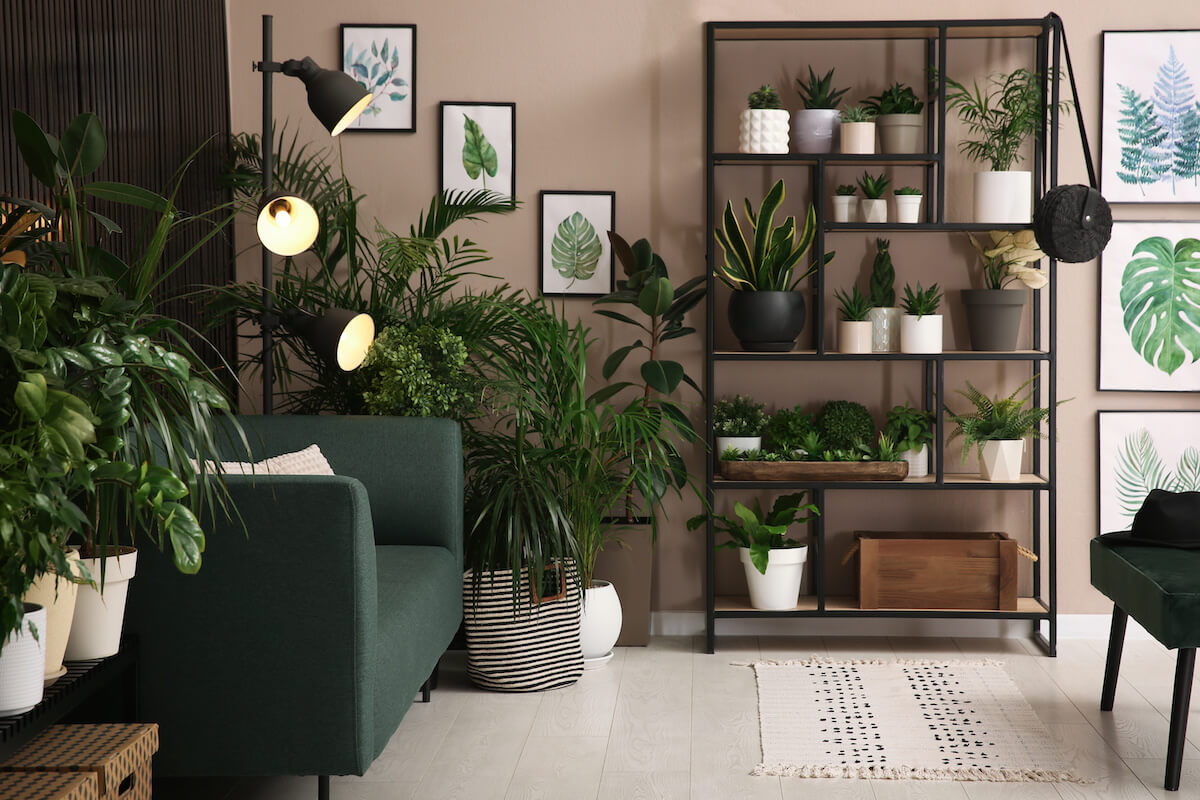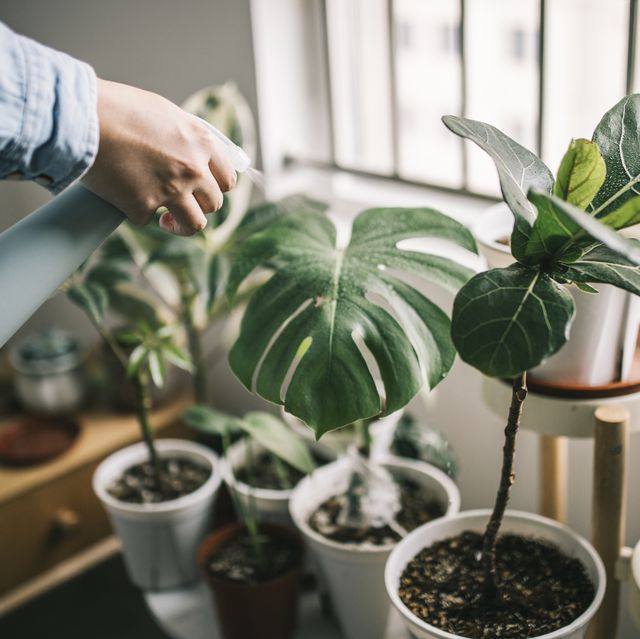Transform Your Home With Beautiful Low-Light Indoor Plants and Their Advantages
Including low-light indoor plants right into your home can substantially improve both the ecological and visual quality of your living rooms. These plants, which prosper in dim conditions, offer not only as ornamental components however additionally as natural air purifiers, making them ideal for metropolitan occupants or those with limited sunshine exposure. As we explore the different kinds of low-light plants and their benefits, you may discover unexpected methods to incorporate them into your home that can transform your surroundings in ways you could not have actually anticipated.
Benefits of Low-Light Plants
Low-light plants use countless benefits for interior environments, making them an outstanding selection for both amateur and skilled garden enthusiasts. One of the main benefits is their versatility to low-light problems, enabling people to enhance their space without the requirement for considerable sunshine direct exposure. This particular makes them ideal for homes, offices, and other locations with minimal all-natural light.

Additionally, incorporating low-light plants right into home design can boost the visual allure of a space. Their rich vegetation and varied structures produce a calming atmosphere, adding to general well-being. Finally, the existence of greenery has been linked to minimized stress and anxiety levels and enhanced efficiency, making low-light plants a sensible choice for improving both physical and psychological wellness in interior settings.
Top Low-Light Indoor Plants
While numerous interior plants prosper in bright light, numerous types are particularly appropriate for low-light conditions, making them excellent for different interior spaces. One popular option is the Snake Plant (Sansevieria), recognized for its striking upright leaves and strength, requiring marginal treatment. One more superb choice is the Pothos (Epipremnum aureum), which includes heart-shaped leaves and can track magnificently from shelves or wall mounts, growing in low light and adding a lavish touch.
The ZZ Plant (Zamioculcas zamiifolia) is celebrated for its shiny fallen leaves and ability to stand up to neglect, making it best for active lifestyles. Likewise, the Tranquility Lily (Spathiphyllum) not only tolerates reduced light yet also creates magnificent white blooms, improving any kind of room's aesthetic.
For a distinct touch, think about the Cast Iron Plant (Aspidistra elatior), which without a doubt meets its name, thriving in the darkest corners of your home. The Chinese Evergreen (Aglaonema) uses a selection of fallen leave patterns and shades while being exceptionally forgiving in low-light problems. These plants not just improve interior settings yet additionally add to air filtration, boosting your space.
Treatment Tips for Low-Light Plants

Watering methods are critical; these plants commonly like a little dry conditions. Overwatering can result in root rot, so make sure that the leading inch of dirt is completely dry prior to watering again. Use pots with drain openings to enable excess dampness to run away.
Moisture is an additional vital element. Numerous low-light plants, such as ferns and peace lilies, take advantage of higher humidity levels. To raise moisture, think about misting the fallen leaves or placing a tray of water near the plants.
Fertilizing ought to be come close to with caution. During the growing season, this post make use of a watered down, balanced liquid fertilizer monthly to support growth, yet stay clear of feeding throughout the inactive wintertime months.

Innovative Ways to Present Plants
Indoor plants can act as captivating focal points in any kind of room, improving both visual allure and ambiance. Innovative display screens can elevate the visual effect of low-light plants, making them an indispensable component of your home decor. One efficient technique is to make use of tiered plant stands, which permit you to showcase several plants at varying elevations while maximizing floor space.
Hanging planters are one more ingenious option, producing a feeling of deepness and drawing the eye up. Take into browse this site consideration macramé wall mounts or wall-mounted racks to present an unique structure and style.
For a much more structured method, use geometric terrariums or glass containers to house your plants, adding a contemporary touch to your indoor garden. You can also repurpose vintage items, such as teacups or wooden crates, for an eclectic display that mirrors your individuality.
Enhancing Home Setting With Plants
Integrating low-light plants into your home not just improves visual appeal but also adds dramatically to the total setting. These plants work as all-natural design aspects, introducing a feeling of peace that can change any type of space. The presence of plant cultivates a soothing environment, which is particularly beneficial in high-stress settings such as office or living areas.
Low-light plants, such as snake plants, pothos, and ZZ plants, are not only cosmetically pleasing however also boost interior air quality by filtering system toxins. This double function boosts the atmosphere further, developing a healthier space (Best low-light indoor plants). The strategic placement of these plants can likewise affect the understanding of space; as an example, tall plants can attract the eye up, making ceilings appear greater and rooms extra large
Moreover, differing textures and shades of foliage include depth to indoor design, permitting for creative expression in home designing. Whether positioned on racks, in corners, or as centerpieces, low-light plants can elevate Full Report the state of mind of any area. In recap, integrating these plants right into your home is an effective method to foster a warm, welcoming environment while profiting of enhanced air top quality and aesthetic convenience.
Conclusion
Integrating low-light interior plants into home settings supplies numerous benefits, including enhanced aesthetic allure and boosted air top quality. These resistant plants, such as the Snake Plant and Peace Lily, need minimal light and maintenance, making them appropriate for varied lifestyles. Their capability to filter toxins adds to a healthier space, while their different appearances and colors enrich interior decoration (Best low-light indoor plants). Inevitably, the inclusion of low-light plants fosters a tranquil and inviting setting, changing any home into a peaceful oasis.
While many interior plants thrive in bright light, several species are specifically well-suited for low-light problems, making them ideal for various indoor rooms. One reliable approach is to make use of tiered plant stands, which enable you to display multiple plants at varying heights while optimizing flooring room.
Low-light plants, such as serpent plants, pothos, and ZZ plants, are not only aesthetically pleasing but additionally boost interior air quality by filtering pollutants. Best low-light indoor plants. The strategic positioning of these plants can additionally influence the perception of space; for circumstances, tall plants can draw the eye upwards, making ceilings show up greater and spaces much more spacious
These resistant plants, such as the Serpent Plant and Peace Lily, call for very little light and maintenance, making them ideal for varied way of livings.